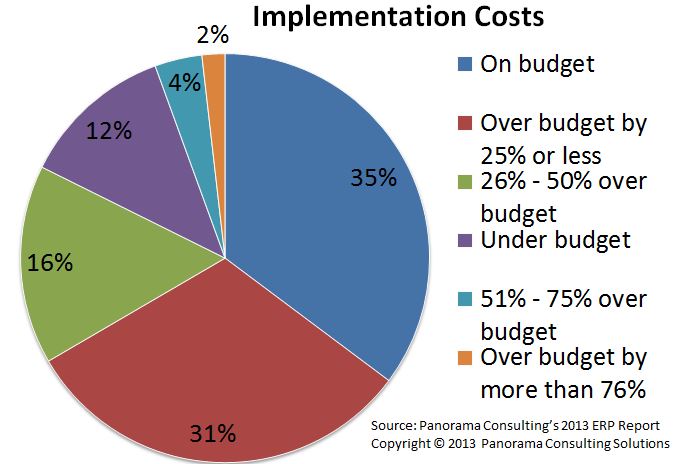Who: IBM and the State of Pennsylvania
What:
- Pennsylvania has terminated a contract with IBM to provide new software for the state’s unemployment compensation system
- 42 months behind schedule
- $60 million cost overrun, based on an original budget of $106.9 million
When: August 9, 2013
Where: Pennsylvania
Why: Significant delays and cost overruns led to a huge IT failure that illustrates the problems that arise when customer and system integrator do not fulfill their responsibilities and obligations.
How: Different expectations and understanding about the planning
Lessons Learned:
Over the years Panorama has been conducting its independent research, such as our 2013 ERP Report, and we have found that more often than not, ERP implementation costs and durations exceed organizations’ expectations. To add insult, all of the extra cost and time spent to implement the systems does not seem to have a positive impact on the amount of benefits organizations receive.
 The recent contract termination between the State of Pennsylvania and IBM highlights this rising trend that ERP implementation cost and durations, more often than not, are higher than expected. The reason? IBM and Pennsylvania both failed to take the time upfront to develop a strong, solid ERP strategy and plan that would have mitigated risk. The result was a failed software implementation that by the time of cancellation, the state’s new unemployment compensation system was 42 months behind schedule, with a $60 million cost overrun, based on an original budget of $106.9 million.
The recent contract termination between the State of Pennsylvania and IBM highlights this rising trend that ERP implementation cost and durations, more often than not, are higher than expected. The reason? IBM and Pennsylvania both failed to take the time upfront to develop a strong, solid ERP strategy and plan that would have mitigated risk. The result was a failed software implementation that by the time of cancellation, the state’s new unemployment compensation system was 42 months behind schedule, with a $60 million cost overrun, based on an original budget of $106.9 million.
An independent study conducted by Carnegie Mellon University’s Software Engineering Institute made clear that the reason this project failed was due to both sides failing to fulfill their responsibilities. Faults included lack of sufficient testing and quality assurance, as well as both parties failing to set realistic expectations and understandings about the project. Cases such as this raise a red flag that there needs to be a strong relationship among enterprise buyers, software vendors and system integrators.
In the situation of Pennsylvania, their project management team did not have sufficient expertise to put together a strong, solid request for proposal. Without the proper information about the project, IBM may have bid too low on the project, hoping to win the contract and later creating more expensive change orders further down the road. These two factors created a recipe for disaster that led to the software vendor’s sales people suggesting a product that did not adequately fit with Pennsylvania’s needs.
Following are four tips to help prepare for the potential disaster of a failed ERP implementation:
- Define your corporate strategy and set realistic expectations from the start. In order to help gain a deep understanding of end-user and executive expectations, concerns and anxieties regarding the ERP project, determine where you want your organization to be in five years, ten years, etc.
- Define your organization’s current and future state business processes to assess possible risks and measure the success of risk mitigation activities.
- Train end-users. Well-executed training covers both technology as well as processes and helps facilitate employee buy-in and overcome resistance to change.
- During implementation, ERP software should be configured to the needs of the business, instead of the business being configured to the needs of the software. This ensures alignment with corporate strategy.
To avoid ERP failure, your organization’s business strategy should drive your ERP project. To learn more, download our 2013 ERP Report.
Written by Daniel Rivero-DeAguilar, Business Development Assistant at Panorama Consulting Solutions.













